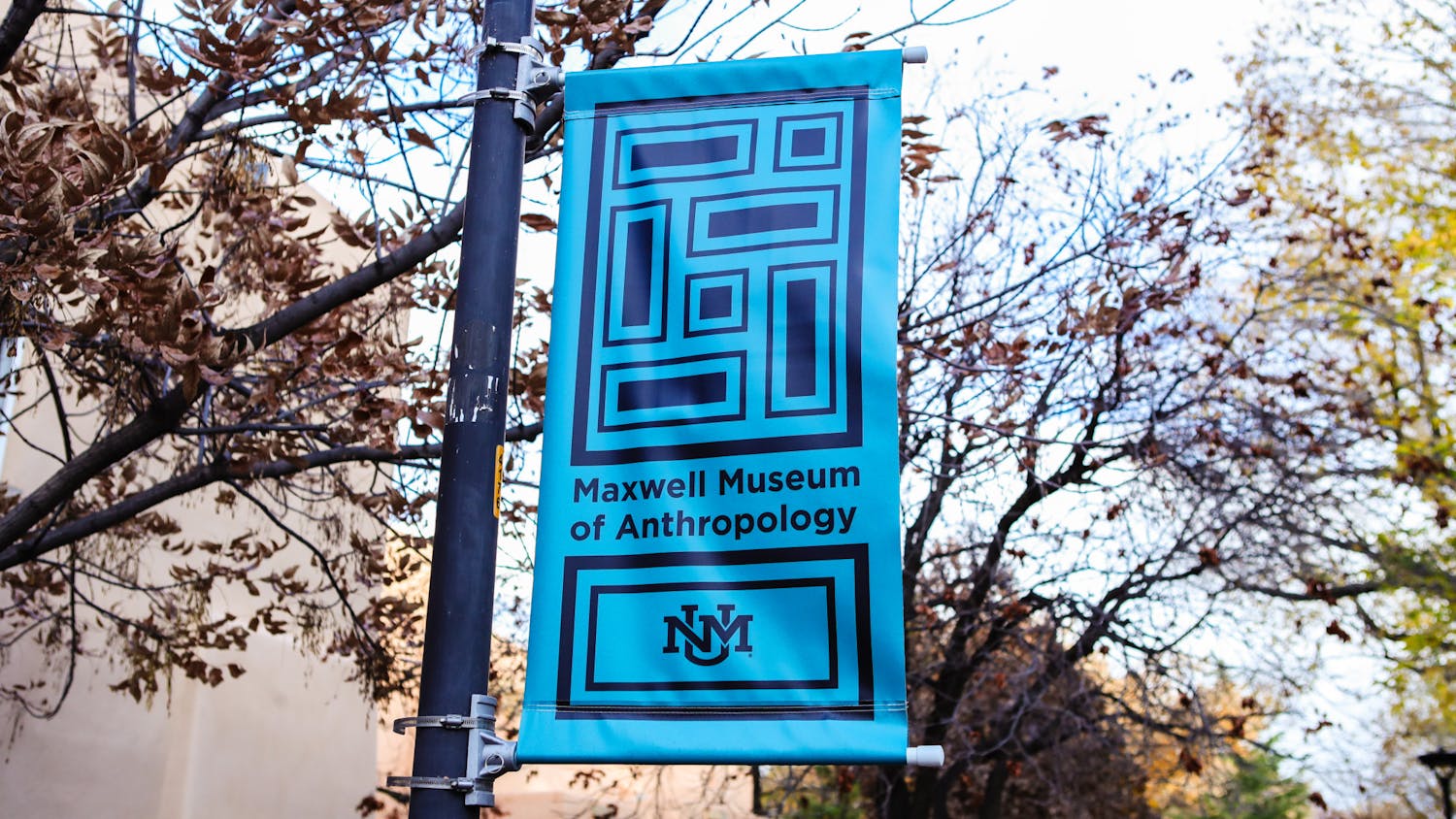American physicist Edwin Land introduced the revolutionary process of instant photography to the world in 1947. The history of this process and the evolution that eventually formed the Polaroid Corporation is examined in a framed introduction exhibited in Innovation/Imagination: 50 Years of Polaroid Photography, which is showing at the University Art Museum in the Center for the Arts building.
A quote from Land explains that the instant photographic process - in which exposure, development and printing all take place inside the camera - is "essentially aesthetic, though the realm of investigation is, of course, scientific and technical. The aesthetic purpose is to make available a new medium of expression for numerous individuals who have an artistic interest in the world around them."
The first instant photographs were processed in black and white. Later, as the development of Polaroid continued, experimentation with larger sized cameras and prints, various textures and deeply saturated colors began to predominate. Thus, a new genre of photography was created in the artistic world.
The impressive collection of original photographs showing at the museum will be on display until April 14. Innovation/Imagination features work drawn from the Polaroid archives collection and includes images by legendary artists such as Ansel Adams, Andy Warhol and Barbara Kasten.
In addition, the museum is showing an accompanying exhibition, Polaroid: The New Mexico Connection, which features work produced and provided by local artists affiliated with the UNM Department of Art and Art History.
I was not sure what to expect from the show prior to seeing it because of the associations I have with the term "Polaroid" and the piles of square, funky, out-of-focus instant pictures that epitomize my childhood.
Get content from The Daily Lobo delivered to your inbox
Although I have a natural fondness for Polaroid - who doesn't love the whole idea behind that wacky cam? - I couldn't imagine what a series of professional Polaroid photographs could possibly look like.
Immediately I was impressed. It turns out that the majority of the photos are not the typical 3-inch floppy squares I thought they might be.
Most of them are about 20 by 24 inches, taken with a special camera that stands five feet tall, weighs more than 300 pounds, and requires its own camera operator to produce the images for the artists.
The photos are generally crisp and remarkably high in quality. Many intriguing artistic tactics were applied to them, which vary from the composite arrangements of photographs to form mosaic images, to experimentations with movement, pattern and color, to the actual chemical alteration of the pieces and their transference onto outside media.
Images from Barbara Kasten's "Temple" series are particularly captivating because of their abstraction of shape and color, as these qualities are not customarily attributed to instant photographs. "Polaroid Flashlight Torso," by Ron Cooper, is interesting because of its use of blur, limited light and color.
"Composite #115," by Silvia Taccani, is a large montage of 121 traditional-sized Polaroids that play upon subtleties of pattern and the orientation of both the subject of the image and the photograph itself.
Polaroid: The New Mexico Connection is composed of images produced when, in 1988, the UNM Department of Art and Art History was given the opportunity to borrow the massive Polaroid 20 by 24 Camera, which usually resides in New York. Images on display are borrowed from various local artists and faculty members, including painter and UNM Art Studio instructor Michael Cook and painter/printmaker Vera Sprunt, who currently has an exhibition showing at UNM's Jonson Gallery.
The history of the Polaroid Corporation is fairly noteworthy in itself.
Brief descriptions of Polaroid milestones are explained at the introduction of the exhibition. Some of the more interesting achievements include film that produces both a positive and negative image, from which reproductions and alterations can be made.
As well, in the mid 1970s a room-sized camera was invented that could produce 40 by 80 inch instant photographs - a useful tool for making replicas of fragile pieces of art. Most of Polaroid's success was centered in the 1970s, when both professional-quality advancements were steady and the consumer market for the household Polaroid Land Camera was high. However, with the digital advancements of the 21st Century, instant photography has become less of a demand.
In October 2001, the Polaroid Corporation filed for bankruptcy and now the fate of the genre as an art form is unknown.
What is impressive about the exhibitions is that the featured photographs function as distinguished works of art - the fact that they are Polaroid images is often not even a noticeably relevant issue in the artistic vision of the photos, except for the fascinating smear of color that borders their edges.
This left me quite intrigued as to what the advantages might be to using the practically immobile instant camera over a more traditional method of photographic processing.
My questions concerning the process and control of the camera, exposure and print and other things could not immediately be answered by gazing upon the displayed images.
Nonetheless, I was immersed by the possibilities and concept of instant photography, and certainly I have gained a respect over my previous notions of those floppy, wacky squares of my childhood.
The opening reception for both Innovation/Imagination and The New Mexico Connection will be Friday from 5-7 p.m. at the University Art Museum. In addition, the museum offers a catalog for sale that features the images from the show and historical information about the Polaroid Corporation.





